Interview with Teresa Connors
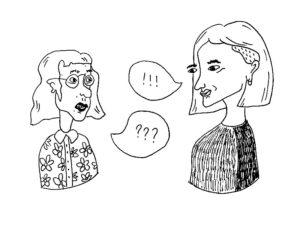
Interview with Teresa Connors conducted by Ashley Hemmings
AH: Can you talk a little bit about your art background? What got you interested in making art, did you go to art school, etc?
TC: I started off in art school at the Nova Scotia College of Art and Design (NSCAD) in the late 80’s. I walked in there with my art box of paints and conté thinking I would study drawing and painting. But then I took a course in sound art and that was the end of my paint box. I dove deep into sound/sonic arts and video arts, but while doing that I became interested in wanting to know more about music. So, I switched from a Fine Art degree to a classical music degree, where I studied composition and opera singing.
AH: Where did you do that?
TC: At Dalhousie, in Nova Scotia. It was interesting switching from fine art to music, because at NSCAD I was entrenched in a hub of creative activity, people were exploring all kinds of stuff, so in my mind that was creative practice. When I went to music school I thought it would be the same way, but it wasn’t, it was really conservative. But, I was curious about music, so I stuck that out and also got quite involved with being an opera singer.
After that I then branched back out into fine art practice. I would actually say that in the last 10 years I constantly reference my fine arts studies, how foundational they were in how I think. In my current practice there are little disciplinary walls, they weave in and out, depending on what’s going on in the work and what curiosities are being followed.
AH: Your work exists at the intersection of science, technology, ecology, music, and fine art. I could imagine that in combining these many disciplines, the content of a project could get lost, but I think your work is very successful. How did you get to this point in your practise where you are able to incorporate so many components together?
TC: Each artwork is situated in specific environments. All the material and data used to make the installations are gathered from the same location. Because of this, I feel the work has its own materiality and narrative. My use of site-specific material has evolved from a long art practice of field recording, with my longtime collaborator, New Zealand filmmaker Andrew Denton. We have done many field recordings all across Canada and through the US. It was through 25 years or more of doing that where I became curious to find other materials in the different environments beyond the sound and video, so I started looking at data. The basic question then became: “What’s here, what can I use?”
One project in particular, “Piano at the End of Poison Stream”, motivated the use of environmental data-sets as a creative device. Denton and I were on a field recording at Bombay Beach, Salton Sea in Southern California, which is considered one of the most depressing places in California. This inland Sea was formed in the early 20 Century when the Colorado River swelled and breached its banks. All the water ran into the Salton Sink and, after two years of continuous flow, formed the largest inland lake in California. It quickly became a favourite getaway spot for the nearby cities. However, with no drainage outlet and little annual rainfall the lake’s salinity level increased, which cause the water to deoxygenate. Denton and I could only record for 10 minutes at a time because the shoreline is piled high with dead fish and birds. It was on that field recording I considered using environmental data-sets as part of the creative process. I eventually used charts for the changing salinity levels of the water.
AH: So how would you use the salinity charts, what would you do with them?
TC: I used a sonification process to turn the salinity graphic numbers into sound. Any number can be transcoded into sound and, depending on the computational processes used, can have surprising results.
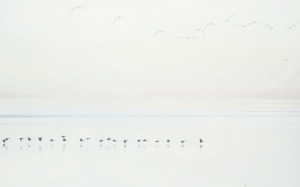
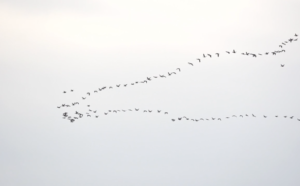
AH: In your work you have a strong relationship with and trust in technology, allowing coding to determine what happens in your absence, why work in this nonlinear improvisational way, as opposed to say, just having a set video that repeats itself in the gallery?
TC: There was a shift in my practice from fixed-media to nonlinear processes, which came about after having worked on many film scores and sound design projects, where the final artwork is locked in place. I became curious about the creative tendencies that might emerge when the linear trajectory of fixed-media formats was suspended— a suspending of beginnings, middles, and ends. What I found is a different aesthetic, which embraces the unpredictable. Through my shift to a nonlinear praxis, the creative practice became more of an entangled co-creative process in the environments and with the materials. There is a loosening-up of (my) human-centric control over the final artifact.
AH: Can you explain a bit more about the knitting patterns, I’m curious both as to why you chose to use them to guide the video grid, but also I’m not entirely sure I even understand in what way they are guiding it?
TC: It has to do with finding material from the situated ecologies from which the works evolve. The installation, Patterns, emerged out of a field recording project with another of my longtime collaborators, Shannon Lynn Harris. Last June, for a month, Harris and I recorded audiovisual material between Cape Spear and Middle Cove. When the Eastern Edge invited me to install the work (April 26 – May24), I began to consider other data-sets that could become a creative coding device, specifically linked to this ecology. Christine LeGrow and Shirley Scott’s knitting patterns book was released at the same time [From the Island of Newfoundland, Saltwater Mittens] so I became curious to code those into the system. I had already coded what I call the ‘video fabric’ and had experimented with different data-sets and decided to see what would happen using knitting patterns as a different ingredient. Sometimes it works, sometimes it doesn’t, but I like the knitting patterns effect in the work.
AH: Do you know how to knit?
TC: I know how to crochet. My grandmother was an amazing crocheter, and I have a lot of her works, which are really beautiful and in some was looks like code. There are patterns in how everything connects, and it will only connect if you do this, that, that, and that. Which is how creative code works.
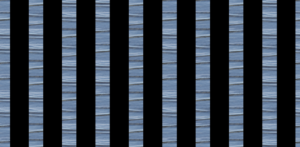
AH: Your work is so intelligent and academic; how do you make sure that it is still accessible to the general public?
TC: That’s a good question… Actually I’m going to ask you a question back to help me answer that, do you consider my work academic because you know I have a PHD or because you look at that work and you feel oh that’s academic work?
AH: Hmm… I think the language you use to talk and write about your work is what makes it feel academic to me.
TC: Okay, that’s good. So, going through that process of PHD research I had to find ways (and words) to contextualize the practice and the artworks that I developed for my dissertation.
I was drawn to critical, theoretical, and philosophical discourses that broadened my ideas on agency and the performative, which provided different vocabularies with which to be in the creative practice. Folks like Karen Barad, Jane Bennett, Brian Massumi and Timothy Morton— they became my thinking friends. Because of that process, how I write about the work changed. But, it’s important to say, that it’s out creative practice that the pull toward these thinker has occurred—basically practice-based research. There are complexities occurring in the creative process that my “friends” have helped me contextualize.
AH: That’s a good point, I guess the projection work itself is fairly accessible, but then reading the theory makes it more complicated while also contextualizing it in a way that makes it more accessible.
TC: Yes, that’s it, what you just did, it’s that loop.
AH: It’s like both parts are necessary to contextualize each other.
TC: Yeah, I’ve had to work really hard at that aspect — the writing, the words, the description of process. There are many layers, so I’m trying find the right words to back up what is happening in creative practice and true to the process. It’s not easy.
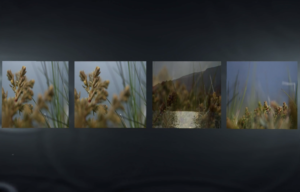
AH: Okay, I just have one more question: You are doing a self-directed artist residency here at Eastern Edge starting next month, do you want to say anything about how this project might inform what you are going to be doing here?
TC: Yaaaaay! Well yes actually! I’m trying to get the audiovisual artwork off the wall. I want to work on different relief panel ideas, so it’s more of a visual sculpture that’s not sitting flat on the wall. There is also this other aspect that I’m curious about, and I’ve been curious about this for a while, is how to completely get rid of video, so that the visual abstractions are generated from the code, which is influenced by live streamed environmental data-sets. I love that stuff!
AH: Thank you for answering my questions, that was really fun.
TC: Well thanks for the conversation!
Teresa Connors is active as a creative coder, acoustic/electroacoustic composer, opera singer and audiovisual installation artist. Her creative works have received awards and support from the Canada Council for the Arts, British Columbia Arts Council and Bravo Fact, and have been presented at international conferences, film festivals and galleries. In 2017, Teresa returned to St. John’s to conduct creative research with the International Institute for Critical Studies in Improvisation (IICSI). This research expands on her use of environmental data as a co-creative device in nonlinear audiovisual installations. www.divatproductions.com